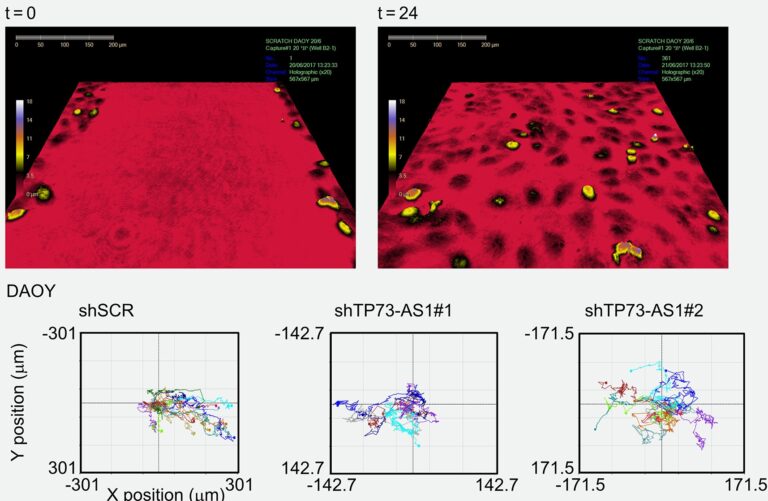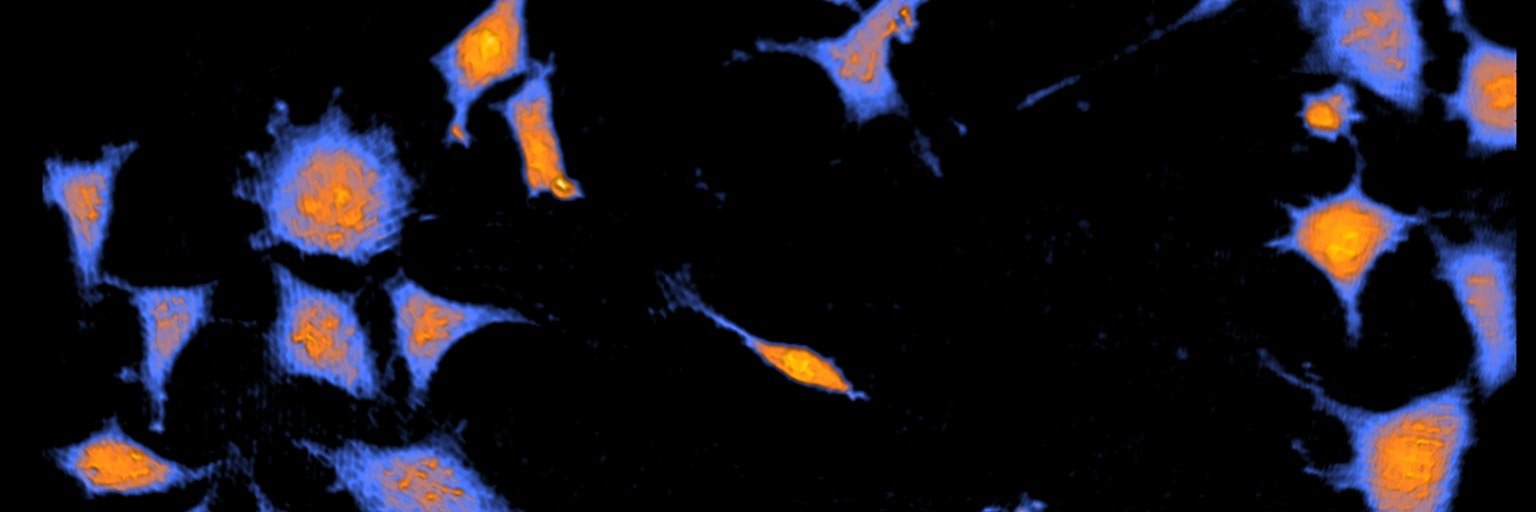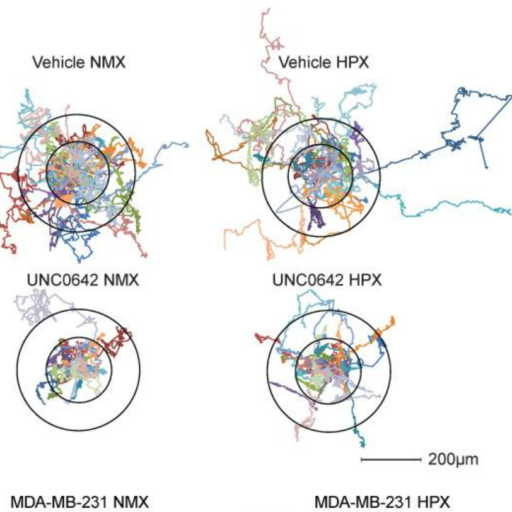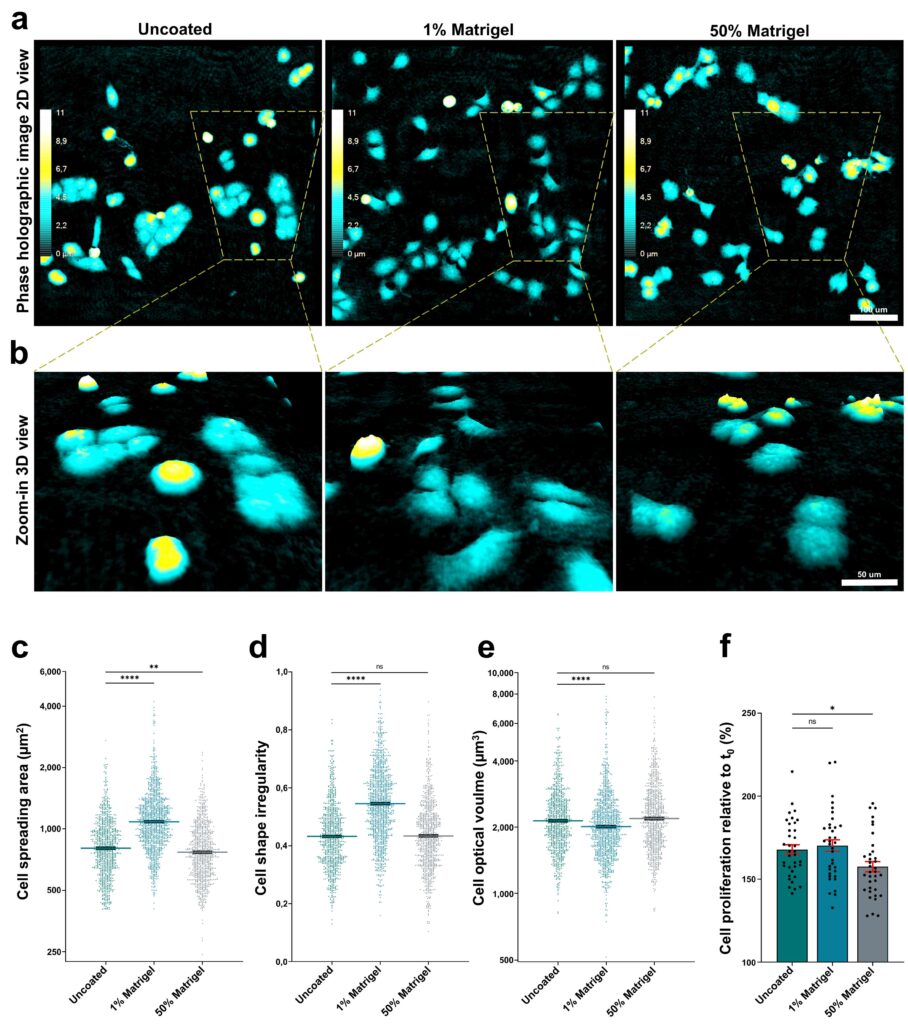Advancing Cancer Research with Quantitative Live Cell Imaging
Cancer is a leading human disease with persistently high mortality rates. Thus, understanding the how, where, why and with whom metastatic cancer cells disseminate and proliferate is one of the highest importance in cancer research. The HoloMonitor live cell imaging system advances your cancer research with a non-invasive way to measure and quantify cell activity in real-time without compromising the integrity of your precious cells. Therefore, you can get more accurate and native results from your experiments.

A live cell analysis tool with real-time data
Find out more about how HoloMonitor live cell imaging can accelerate your cancer research!
Featured publications within cancer research
Measure mitotic activity in melanocytes
Cutaneous melanoma is deadly skin cancer. The activating mutation BARFV600E mutation exists both in moles and over half cutaneous melanomas.
In this study, in order to investigate why the same mutation has such different consequences in moles and melanomas, the authors using HoloMonitor studied cell proliferation, cell dry mass, cell death and cell growth rate. The experiments showed by increasing the levels of two microRNAs in melanocytes induces mitotic failure, genome duplication, and proliferation arrest. BRAFV600E induces a similar proliferation arrest in primary human melanocytes that is both reversible and conditional depending on the differentiation state of the melanocyte.
On-demand webinar
The secrets to truly controlled cell experiments for cancer research
Find out how HoloMonitor provides better insights by analyzing proliferation, morphology and movement data for both single cells and cell populations.
Discover HoloMonitor Live Cell Assays
Learn more about what you can do with HoloMonitor
Answer cancer research questions with quantitative live cell imaging
24 hours time-lapse video of MDA-MB-231 breast cancer cells
72 hours time-lapse video of JIMT-1 breast cancer cells
Browsing publications in cancer research
Get inspired by other research fellows, and learn how HoloMonitor quantitative live cell imaging can benefit your cancer research:

Dissecting Morphological and Functional Dynamics of Non-Tumorigenic and Triple-Negative Breast Cancer Cell Lines Using PCA and t-SNE Analysis
Journal: Cancer Reports (2025)
Research Areas: Cancer Research
Cell Lines: MCF10A, MDA-MB-231
Dual upregulation of miRNA-143 and miRNA-506 in non-small cell lung cancer inhibits proliferation, motility, migration, and tumor growth
Journal: Front. Drug Discov., (2025)
Research Areas: Cancer research
Cell Lines: H1975

Comparative study of the anti-tumour effects of the imipridone, ONC201 and its fluorinated analogues on pancreatic cancer cell line
Journal: Scientific Reports (2025)
Research Areas: Cancer research
Cell Lines: PANC-1 and MIA PaCa-2

Advancing humanized 3D tumor modeling using an open access xeno-free medium
Journal: Frontiers in Toxicology (2025)
Research Areas: Cancer Research
Cell Lines: MCF-7, HeLa

Nuclear Overexpression of SAMHD1 Induces M Phase Stalling in Hepatoma Cells and Suppresses HCC Progression by Interacting with the Cohesin Complex
Journal: Advanced Science (2024)
Research Areas: Cancer Research
Cell Lines: HEK293T cells (GNHu44), HepG2 cells (TCHu72) and Huh7 cells (TCHu182)

Real-time morphometric analysis of targeted therapy for neuroblastoma cells in monolayer and 3D hydrogels using digital holographic microscopy
Journal: iScience (2024)
Research Areas: Cancer Research
Cell Lines: SK-N-BE (2), SH-SY5Y
Discover our partners in cancer research

Lund University Cancer Centre

Uppsala University

UCSF







